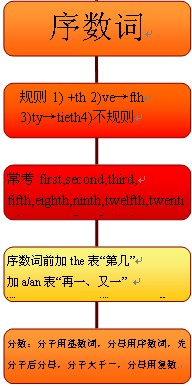PART FOUR WRITING
SECTION A
Directions: Read the following passage. Complete the diagram by using the information from the passage.
Write NO MORE THAN THREE WORDS for each answer.
One of the definitions of a symbol is that it is "something that stands for something else. " We can divide symbols into three kinds: the conventional, the accidental, and the universal symbol.
The conventional symbol is the best known in everyday language., The letters t-a-b-1-e stand for the thing "table" we see, touch, and use. But there is no inherent (内在的) relationship between the meaning and its letters or sound. The only reason the word symbolizes the thing is the convention of calling this particular thing by a name. After being repeated over and over, the word is accepted in the language.
Besides words, pictures also act as symbols. A flag, for instance, may stand for a specific country, and yet there is no inherent connection between the specific colors and the country for which they stand. It has been accepted after repeated uses.
The opposite to the conventional symbol is the accidental symbol. Supposing that someone has had a saddening experience in a city, he will easily connect the name with a mood of sadness when hearing its name, just as he would connect it with a mood of joy had his experience been a happy one. Obviously, there is nothing in the nature of the city that is either sad or joyful. It is the individual experience connected with the city that makes it a symbol of a mood. The connection between the symbol and the experience symbolized is entirely accidental.
The universal symbol is one in which there is an inherent relationship between the symbol and the symbolized. Take, for instance, the symbol of fire. Fire gives us the impression of power, of energy, and of lightness. When we use fire as a symbol, we describe the inner experience characterized by the same elements the mood of energy, lightness, movement, etc.
The universal symbol is the only one in which the relationship between the symbol and that which is symbolized is not coincidental (巧合的), but inherent. It can be called universal because it is shared by all men, in contrast not only to the accidental symbol, which is entirely personal, but also to the conventional symbol, which is shared by the people of the same convention.
Title. 71
major points
72
|
74
| Connections between Symbols and the Symbolized
|
79
|
Conventional Symbols
| t-a-b-l-e
↓
the thing
"table"
| a flag
↓
75
|
77
| people of the same convention
|
Accidental
Symbols
| 76
↓
joy or sadness
|
78
|
i
本试题 “PART FOUR WRITINGSECTION ADirections: Read the following passage. Complete the diagram by using the information from the passage.Write NO MORE THAN...” 主要考查您对 序数词 等考点的理解。关于这些考点您可以点击下面的选项卡查看详细档案。
序数词的概念:
表示顺序的数称为序数词。如:first, second, third, fourth。 序数词的构成与用法:
1、序数词的构成:
①一般来说,是由相应的基数词加词尾th构成。
例:four+th→fourth
six+th→sixth
seven+th→seventh
ten+th→tenth
②下面这些基数词在变为序数词时,有特殊的变化。
例:one→first
two→second
three→third
five→fifth
eight→eighth
nine→ninth
twelve→twelfth
③十位整数序数词的构成方法是将基数词的词y变成i,然后再加eth。
例:twenty→twentieth
thirty→thirtieth
forty→fortieth
ninety→ninetieth
④两位或两位以上的基数词变成序数词时,仅将个位数变成序数词。
例:twenty-one→twenty-first
thirty-five→thirty-fifth
a hundred and fifty-three→a hundred and fifty-third
2、序数词的用法:
①序数词在使用时,一般加上定冠词。
例:the first book
the second floor
the third day
the fourth week.
②序数词在多数情况下都用作定语,有的也可以作表语、主语和宾语。
例:The may1st is Labour Day. 五月一日是劳动节。
My room is on the second floor. 我的房间在二楼。
The first is larger than the secon.(主语)第一个比第二个大。
Read the book from the first.(宾语)从开头读这本书。
You'll be the sixth to write.(表语)你将是第六个写的。
③序数词的前面可以加上不定冠词,用来表示“再一”,“又一”的意思。
例:You may have a third try. 你可以第三次尝试。 序数词知识体系:

约数的表达方法:
用tens/dozens/scores/hundreds/thousands/millions of 表示“几十、几百、上千、成千上万”等。
如:The boy bought dozens of pencils.
Thousands of people died in the earthquake.
注意: (A):dozen, score, hundred, thousand, million等表示确切数量时,不用复数。
如:five dozen (of) eggs 五打鸡蛋
hree hundred people 三百个人
分数词的构成和用法:
1)分数词构成法:
分数词(FractionalNumerals)由基数词和序数词构成,基数词代表分子,序数词代表分母。除了分子为1的情况下,序数词都要用复数形式:
如:1/4:one-fourth
5/9:five-ninths
2/3:two-thirds
17/5:three and two-fifths
7/12:seven-twelfths
379/8:forty-seven and three-eighths
此外还有下面表示法:
如:1/2:a(one) half
1/4:a(one) quarter
3/4:three-quarters
9/4:two and a quarter
3/2:one and half
31/4:seven and three quarters
与“PART FOUR WRITINGSECTION ADirections: Read the following ...”考查相似的试题有:
|